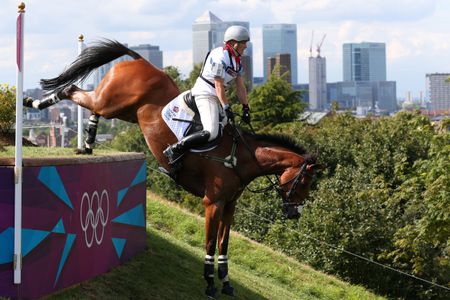What is showjumping?

Contents
1. What is showjumping?
2. General Rules
3. Faults and Penalties
4. Grounds for Elimination
5. Dressage
6. Eventing
- General Rules
- Penalties
- Grounds for Elimination

What is showjumping?
Showjumping is an equestrian sport in which a rider and horse try to jump over all of the fences in a course without knocking them down and within a set time limit. It is performed in an arena in front of a judge and, often, a crowd. Sometimes, showjumping can be referred to “stadium jumping”, “open jumping”, or simply “jumping”. This activity requires a high level of teamwork between horse and rider, while testing the rider’s skill and the horse or pony’s power, scope, speed, athleticism, and carefulness. With training and practice, competitors can clear increasingly higher fences and will be able to compete at higher levels up to Olympic standards. On an international level, showjumping is regulated by the International Federation for Equine Sports (FEI), the body that oversees global competition. In the UK, affiliated competitions are run by British Showjumping, who also control membership and horse registration. Showjumping takes place at either standalone competitions or as part of eventing (in which riders compete across three equestrian events: showjumping, dressage, and cross country).
General Rules
A ground jury consisting of various judges and officials (and qualified according to FEI standards) inspects the course and judges the competition. Horses must be at least nine years old for Olympic competition. A bell is used to communicate with the competitor to signal when they may enter the arena, alert them to halt or continue after an interruption, or to indicate that the rider is eliminated. Red or white flags are used to mark obstacles or mandatory turns. Jumps generally are categorized as spreads, verticals, or water jumps and may be set up in combinations.
Faults and Penalties
- Four faults are given for each jump knocked down (a rail or one or more parts of the jump falls to the ground)
- Four faults are given if one or more hooves leave an impression on the lath surrounding a water jump.
- Four faults are given for the first disobedience (such as a run-out or refusal to jump).
- One penalty point is given for every four seconds or portion of a second exceeding the time allowed in the first and second rounds and jump-offs not against the clock .
- One penalty point is given for each second or portion of a second exceeding the time allowed in a jump-off against the clock.
Grounds for Elimination
- Horse falls (shoulders and haunches touch the ground) or rider falls
- Second disobedience
- Uncorrected deviation from the course
- Exceeding the time limit
* Dressage
Dressage competition includes the dressage event and the dressage phase of the eventing competition. Judging for dressage is perhaps the most subjective of all the Olympic equestrian sports. FEI rules outline the standards for each gait and element of the dressage test. Five judges, positioned around the outside of the 20-meter-by-60-meter (21.9-yard-by-65.6-yard) dressage ring, give each element a score, usually from 0 to 10 with some elements being given greater weight by multiplying the score or "coefficient." The ideal score is 100 percent. Rules regarding the type of tack and dress that may be used are very strict. Competitors are disqualified if all four hooves land outside of the dressage ring, the horse refuses to perform for over 20 seconds, or the horse or rider falls. Penalties are given to riders who go off track or do not salute properly and for other minor infractions. These are deducted from the overall score. At the Olympic level penalties of this type are rare.
* Eventing
Eventing is a combined competition that includes phases of stadium jumping, dressing, and cross country jumping. Rules for the stadium jumping and dressage phases of eventing are similar to those used for the individual events. Cross country jumps are very imposing and not designed to fall or come apart when struck by a horse, although this is slowly changing because of the many deadly accidents that have involved both horses and riders. 섯다 There may be verticals and spreads made of natural and manmade materials, and the course can include ditches, hills, streams, and banks. Judges sit at each obstacle and record any infractions.
General Rules
For the cross country phase, an "optimum time" is established. There is no benefit to finishing earlier than the optimum time, but penalties are given if the rider exceeds the optimum time. Riders may remount after a fall.
Penalties
First disobedience (such as a run-out or refusal, or circling to re-aim at the obstacle): 20 penalties
- Second disobedience: 40 penalties
- Third disobedience: elimination
- Fall of competitor at an obstacle: 65 penalties
- Fall of horse: elimination
- Second fall of the competitor: elimination
Grounds for Elimination
Jumping or incurring a fault at an obstacle in the wrong order or passing through a compulsory passage in the wrong order.
- Horse is lame or exhausted at the Second Horse Inspection
- Unapproved tack and equipment
- Error of course not corrected
- Missing an obstacle or compulsory passage
- Jumping an obstacle already jumped
- Jumping an obstacle in the wrong direction
- Abuse of horse, such as excessive whipping or spurring or using illegal equipment
